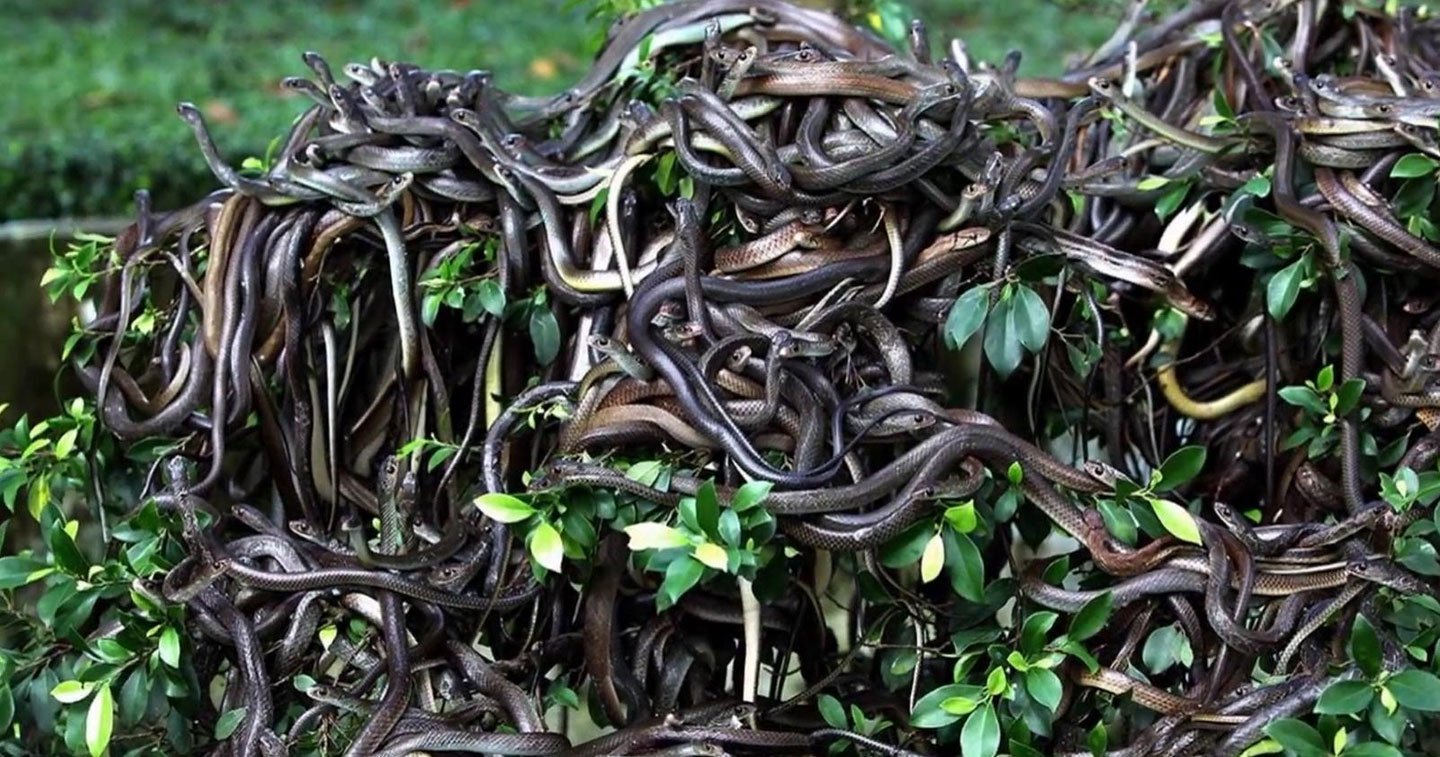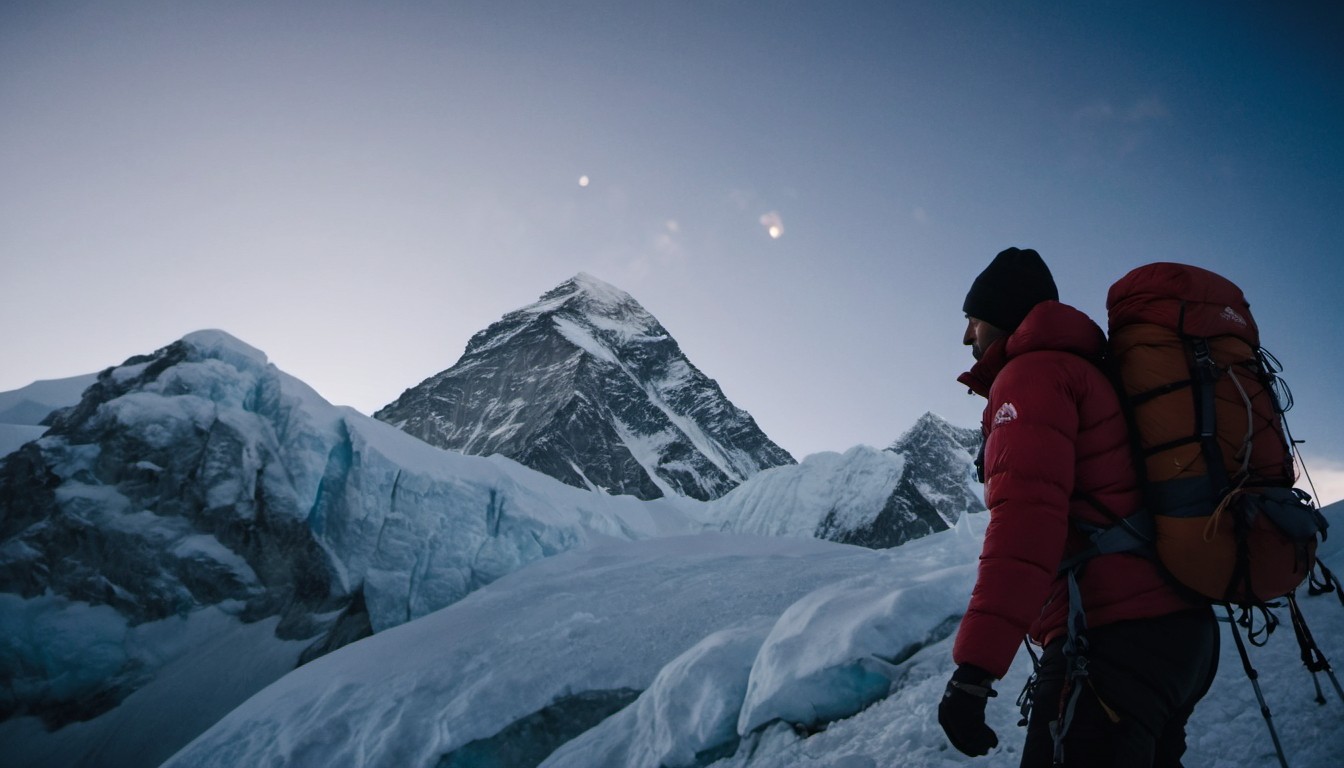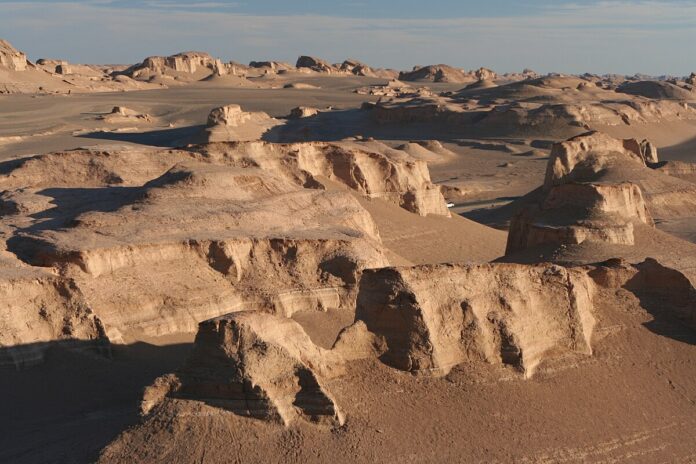If your soul craves something extraordinary, just head to one of the most extremely dangerous places on the planet, where every second is a test of endurance. The danger lurking at every step is not just a beautiful metaphor here, but a harsh reality.
Hell’s Frying Pan: Dasht-e Lut Desert
The sandy-salt desert is located in the center of the Iranian plateau. “Lut” in Arabic translates to “bare”, and the seemingly endless scorching dunes and sand ridges are completely devoid of moisture. In an area of 51,800 square kilometers, there is neither flora nor fauna, and in such conditions, not even bacteria can survive.
Geologists believe that the Dasht-e Lut desert in Iran is the thermal pole of the Earth. The temperature here has repeatedly risen to record highs of 70.7 °C.
The anomalously dry stretch of land, 550 km long and 100 to 200 km wide, is full of surprises. A lone traveler risks getting lost forever amidst the dead sands. Dasht-e Lut is as deadly as it gets.
One of the desert’s attractions is the picturesque Kelut formations, which from a distance resemble an ancient city with rocky formations. The special refraction of light creates a detailed mirage, making it seem like you are seeing streets and buildings.
The water of the world’s saltiest river, resembling kefir in consistency, flowing through the desert, is completely unfit for drinking. The Shur River never dries up even in the hottest years, but its banks are as lifeless as everything around.
Eternal Cold of the “White Continent”
Antarctica is an endless snowy kingdom where winter temperatures drop to -93 °C in some places, causing exhaled carbon dioxide to immediately turn into ice. In such conditions, summer is slightly “warmer” with temperatures dropping to -45 °C. This remote continent is the coldest place on Earth.
In some parts of the continent, called the Dry Valleys, precipitation has not fallen for over 2 million years. The extremely harsh climate has turned vast territories into dead deserts.
Antarctica is the habitat of mammals and penguins. To survive, they form colonies. The flora is extremely poor – there are mainly lichens, moss, and algae.
Global warming is causing extensive ice melting. In 1999, a gigantic iceberg broke off from the continent, the size of which was comparable to the capital of the United Kingdom. Scientists are sounding the alarm: the rise in sea levels will have irreversible consequences.
The vast continent covering an area of 14 million square kilometers does not belong to any country in the world. There are approximately 40 research stations operated by Russia, China, Poland, the United States, Finland, Ukraine, Chile, and other countries.
Centuries-long Drought: Atacama Desert
The driest place on Earth, where the average precipitation does not exceed 1 mm per year, stretches along the western coast of South America (Chilean territory). Its length is about a thousand kilometers. Many meteorological stations in this area have never recorded rainfall throughout their history of observations.
In some corners of this lifeless space with bizarre alien-like terrain, the humidity level reaches 0%. Mountains act as insurmountable barriers to rain clouds. Riverbeds dried up thousands of years ago.
Atacama is not only the driest but also the coldest desert of all, with summer temperatures averaging +14 °C and winter temperatures around +20 °C.
The landscapes look truly surreal: it seems as if you are surrounded by Martian landscapes. Due to similar conditions, this region is used to test devices designed for missions to the red planet. The panorama is so impressive that the desert has become a filming location for many science fiction movies, including one of the episodes of “Star Wars.”
The most dehydrated part of the Atacama is the Lunar Valley, which local shamans consider a mystical place where you can encounter spirits. The picturesque valley is surrounded by hills of unusual shapes.
The Most Dangerous Place on Earth – Ilha da Queimada Grande
The most dangerous places on Earth, Ilha da Queimada Grande, located 35 km off the coast of São Paulo state, Brazil, seems like a lost paradise: covered in dense tropical jungles, cozy sandy beaches are deserted and beckon with magical views. But no one has ever been able to fully enjoy the pristine beauty upon reaching the shore. The island is teeming with the world’s most venomous snakes. Their bite is lethal: the venom is so strong that it dissolves human flesh. The Bothrops insularis has no natural enemies here; even humans prefer to yield territory.
Apart from thousands of reptiles, there are no other animals on the island, as any creature immediately becomes prey for the aggressive creatures. Snakes feed on migratory birds, unaware of the danger lurking.
Ilha da Queimada Grande is a prohibited area, but it can be approached by boat to observe the wildlife through binoculars.
Everest – the Most Treacherous Mountain on Earth
Completing the top five most dangerous places in the world is Mount Everest. Scaling the highest peak in the world (8,848 m) is the dream of any mountaineer, but fortune smiles on few. Attempting to ascend to the summit has been the last for many, and their bodies remain in a snowy grave. The slopes are literally littered with the dead, whose remains nobody plans to bring down.
Ascending Everest from either the Tibetan or Nepalese side is equally dangerous. As the brave traveler ascends higher and higher, they encounter several difficulties: acute oxygen deficiency, gusty winds, the threat of avalanches, intense solar radiation.
Air temperatures periodically drop to -60 °C, combined with other factors, it feels like -100 °C. The body operates at the limit of its capabilities, even experienced climbers may experience hallucinations, blindness, lung edema, heart attack, stroke, loss of sleep and appetite.
The final stretch of the 900 m-long path is called the “death zone,” and the round trip takes about 18 hours.
During the ascent, a person loses 10-15 kg of body weight. The entire expedition, including acclimatization, lasts about 2 months.
